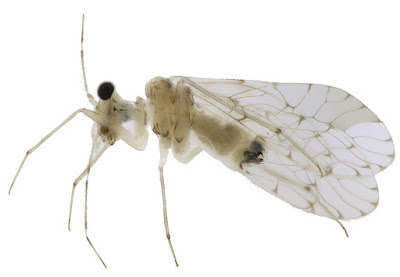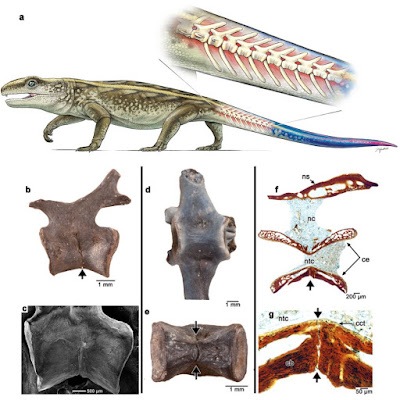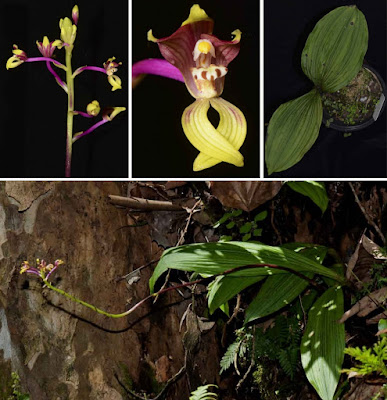[Most Recent Entries] [Calendar View]
Tuesday, March 6th, 2018
| Time | Event | ||
| 10:57a | [Entomology • 2018] Ptiloneuropsis diamantina • A New Species from Bahia, Brazil | After Seventy-seven Years Ptiloneuropsis Roesler (Psocodea: Psocomorpha: Ptiloneuridae) Ceases to be A Monotypic Genus
Abstract A new species of Ptiloneuropsis from the Brazilian state of Bahia is here described and illustrated, it is based on male and female specimens; it differs from P. immaculata Roesler in details of the hypandrium and phallosome; the female is the first known in the genus. Keywords: Plecoptera, Epipsocetae, psocids, neotropics, taxonomy Ptiloneuropsis diamantina n. sp. Etymology. The specific name refers to the Chapada Diamantina region, in the Brazilian state of Bahia, where the specimens were found. Alberto Moreira da Silva Neto and José Albertino Rafael. 2018. After Seventy-seven Years Ptiloneuropsis Roesler (Psocodea: Psocomorpha: Ptiloneuridae) Ceases to be A Monotypic Genus: A New Species from Bahia, Brazil. Zootaxa. 4388(4); 567–574. DOI: 10.11646/zootaxa.4388.4.8 Alfonso Neri García Aldrete. 2004. Rediscovery of Ptiloneuropsis immaculata Roesler 1940 (Psocoptera: Ptiloneuridae), Augmented Description and Neotype Designation. Studies on Neotropical Fauna and Environment. 39(2); 145-148. DOI: 10.1080/01650520412331333792ResearchGate.net/publication/248913823_R Alberto Moreira da Silva Neto and Alfonso Neri García Aldrete. 2015. Brasineura n. gen., A new genus in the family Ptiloneuridae (Psocodea: ‘Psocoptera’: Psocomorpha: Epipsocetae) from Brazil. Zootaxa. 3914(2); 168–174. DOI: 10.11646/zootaxa.3914.2.6 | ||
| 11:20a | [Paleontology • 2018] Caudal Autotomy as Anti-predatory Behaviour in Palaeozoic Reptiles
Abstract Many lizards can drop a portion of their tail in response to an attack by a predator, a behaviour known as caudal autotomy. The capacity for intravertebral autotomy among modern reptiles suggests that it evolved in the lepidosaur branch of reptilian evolution, because no such vertebral features are known in turtles or crocodilians. Here we present the first detailed evidence of the oldest known case of caudal autotomy, found only among members of the Early Permian captorhinids, a group of ancient reptiles that diversified extensively and gained a near global distribution before the end-Permian mass extinction event of the Palaeozoic. Histological and SEM evidence show that these early reptiles were the first amniotes that could autotomize their tails, likely as an anti-predatory behaviour. As in modern iguanid lizards, smaller captorhinids were able to drop their tails as juveniles, presumably as a mechanism to evade a predator, whereas larger individuals may have gradually lost this ability. Caudal autotomy in captorhinid reptiles highlights the antiquity of this anti-predator behaviour in a small member of a terrestrial community composed predominantly of larger amphibian and synapsid predators. A. R. H. LeBlanc, M. J. MacDougall, Y. Haridy, D. Scott and R. R. Reisz. 2018. Caudal Autotomy as Anti-predatory Behaviour in Palaeozoic Reptiles. Scientific Reports. 8, 3328. DOI: 10.1038/s41598-018-21526-3 Escape artist: Ancient reptile Captorhinus could detach its tail to elude predators | ||
| 12:02p | [Botany • 2018] Govenia polychroma • A New Species of Orchidaceae from Veracruz, Mexico
Abstract Govenia polychroma, a new orchid species from central Veracruz, Mexico is described and illustrated. It is similar to G. matudae, G. praecox and G. rubellilabia in the relatively small flowers, two leaves and globose corms, but differs from all previously described species in the purplish-magenta petals with yellow apices and the strongly conduplicate, narrowly channeled column foot. Due to its small geographical range (less than 1 sq.km.) and the small number of both populations (two) and individuals (14), the new species is considered as endangered. Keywords: Cloud forest, extinction risk, taxonomy, Monocots Govenia polychroma Salazar, Fernández-Díaz & Huerta-Alvízar, sp. nov. Type:—MEXICO. Veracruz: municipio Naranjal, El Rincón de Axalpa, cloud forest, 887 m elev., collected 30 August 2015, pressed in cultivation 5 October 2016, Fernández-Díaz & Huerta-Alvízar 37 (holotype: MEXU! isotypes: AMO! XAL!). Diagnosis: Differing from other species of Govenia in the purplish-magenta petals with yellow apices and strongly conduplicate column foot, such that the rounded, convex inner sides of the latter are in close proximity to each other instead of leaving a wide channel between them. .... Etymology:—From Greek polychromous, many-colored, in reference to the distinctive colour of the flowers in contrasting tones of yellow, magenta, purplish-magenta, white, and brown. Gerardo A. Salazar, Adrián Fernández Díaz, Carlos René Huerta-Alvizar, Rolando Jiménez-Machorro, Lidia I. Cabrera and H. David Jimeno-Sevilla. 2018. Govenia polychroma, A New Species of Orchidaceae from Veracruz, Mexico. Phytotaxa. 343(1); 82–88. DOI: 10.11646/phytotaxa.343.1.8 |
| << Previous Day |
2018/03/06 [Calendar] |
Next Day >> |







